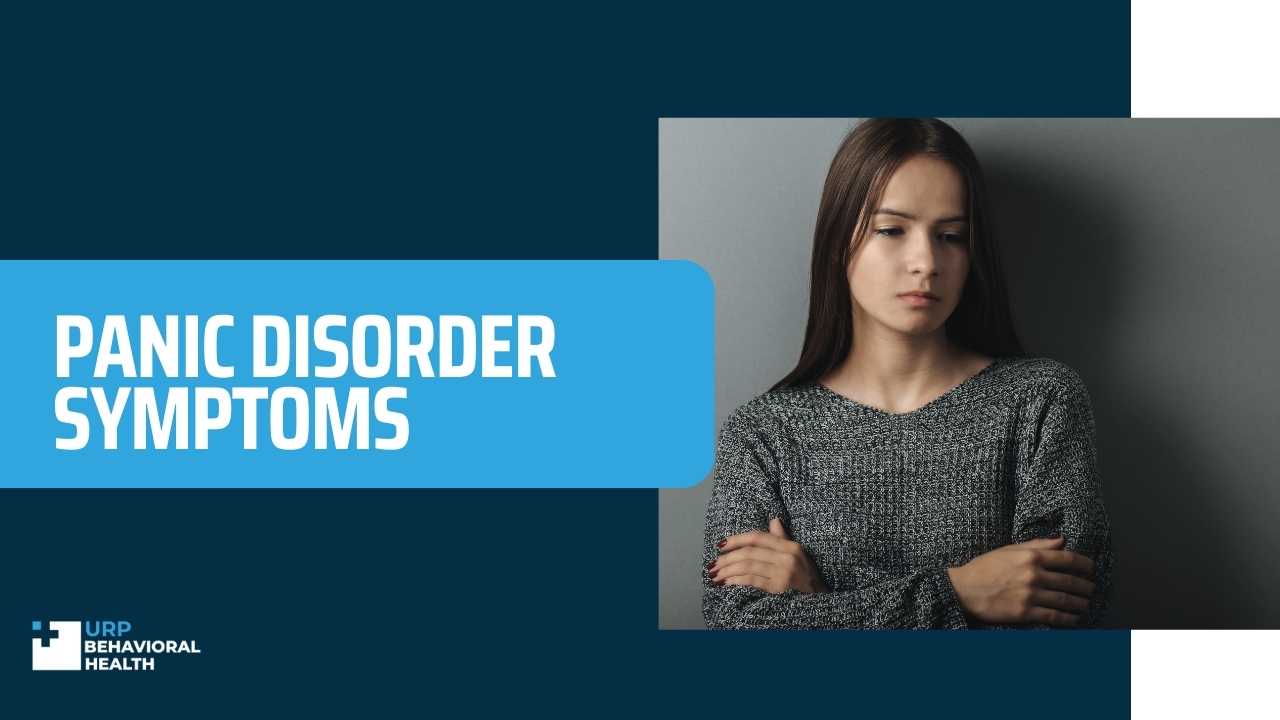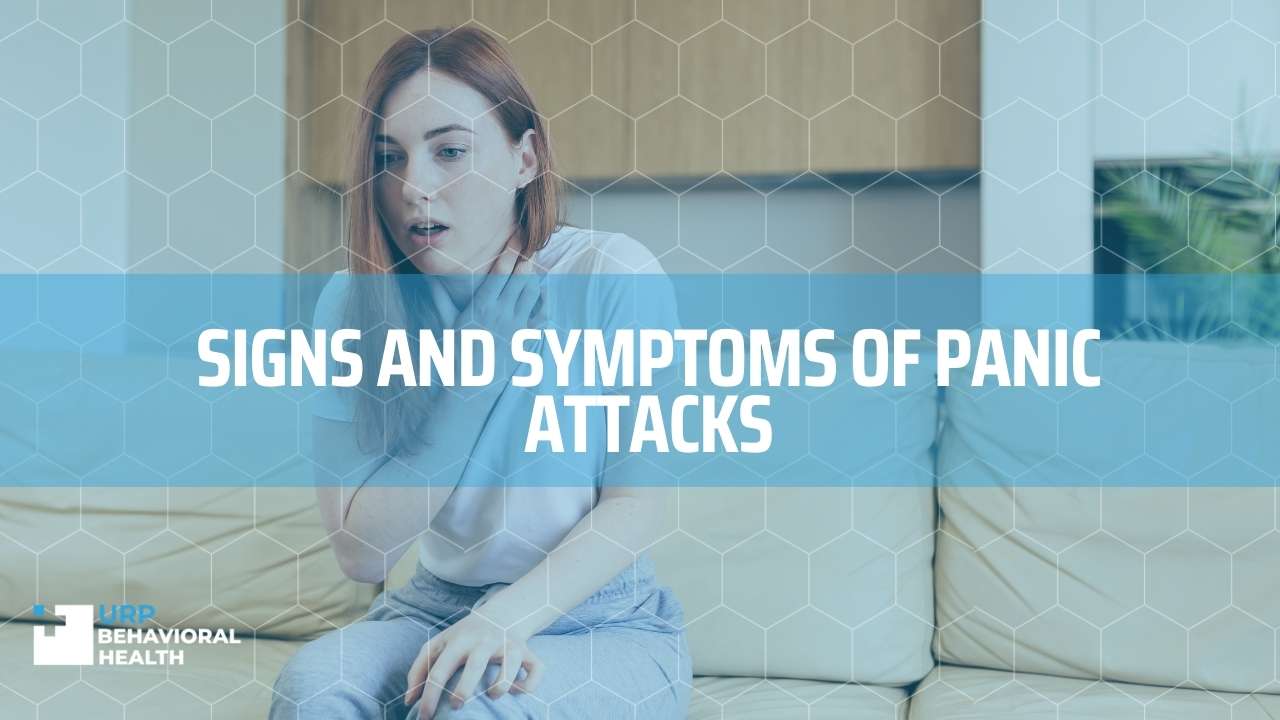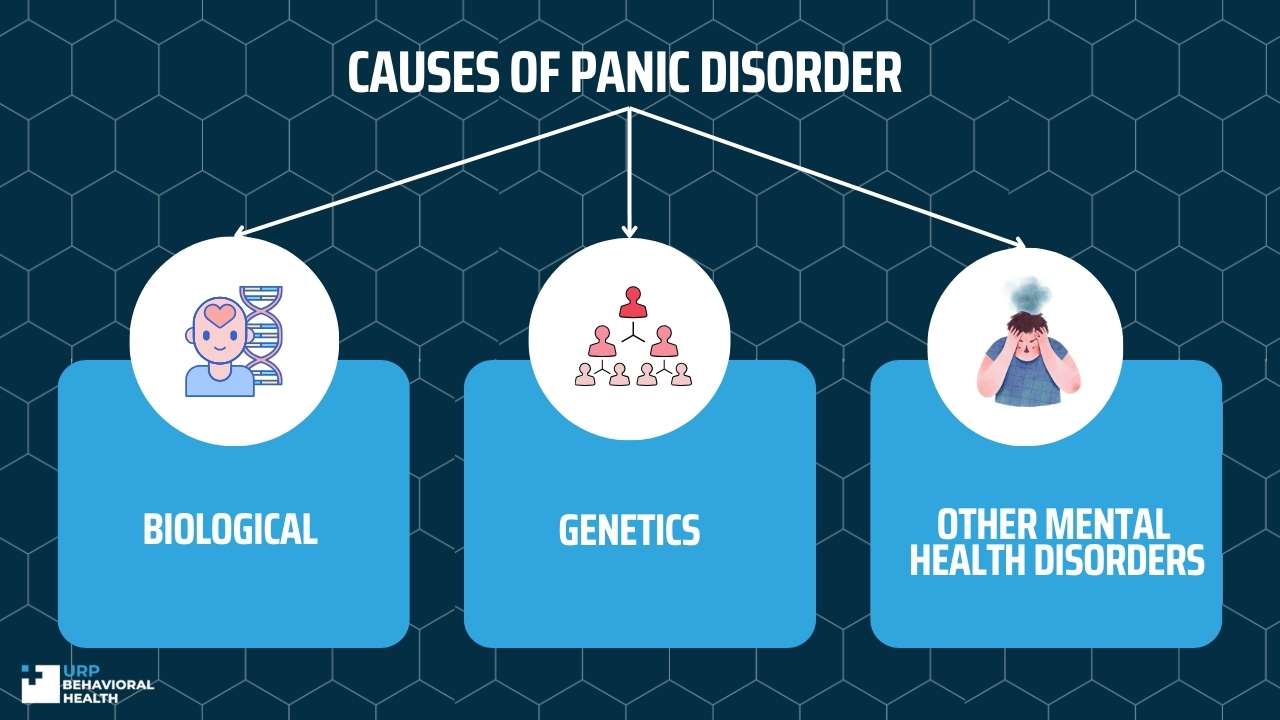Panic Attacks & Panic Disorder Symptoms and Causes

In the US, about 11 percent of people experience panic attacks each year, but not all of them have a disorder. Numbers by the National Institutes of Health indicate that around 2.7 percent of American adults had a panic disorder in the last year, which amounts to 6 million people. Prevalence rates also indicate that the condition is twice as common in women as in men.
Panic disorder symptoms can interfere with your ability to perform everyday activities like going to work or taking a doctor’s appointment. So, it’s worth taking a look at these symptoms, what causes them, and when to seek professional help.

What Is Panic Disorder?
Let’s begin by understanding what panic disorder is. A panic disorder is when you frequently experience sudden and unexpected panic attacks without an apparent cause. Not everyone who experiences a panic attack ends up developing a disorder.
A primary feature of this disorder is that you experience panic attacks that occur without warning and aren’t the result of another condition. Another characteristic of the disorder is when you live in constant fear of another attack – to the extent that it affects your ability to function.

Signs and Symptoms of Panic Attacks
During a panic attack, you experience a sudden and abrupt surge of fear and discomfort. Symptoms are intense and peak within minutes. The symptoms panic attack:
- Increased heart rate occurs as a result of significant sympathetic discharge, which activates the fight or flight response, making it feel as if your heart is racing.
- Chest pain is also described as a sharp, shooting pain that only lasts a few minutes. It’s why some people mistake a panic attack for a heart attack.
- Sweating: Your body starts sweating as part of its stress response. An increased heart rate causes the body’s internal temperature to rise, which results in sweating.
- Shaking and trembling: When stress hormones adrenaline and cortisol flood your system during a panic attack, they cause your muscles to become tense, which results in tremors and twitching.
- Shortness of breath: When your body enters a state of fight-or-flight during a panic attack, it sends most oxygen to the muscles, priming them to fight or flee. This causes you to take short, shallow breaths that make you feel short of breath.
- Choking: When your muscles start tightening as part of your body’s stress response, your throat muscles can become tense. This makes it feel as if you’re choking and have a lump in your throat.
- Nausea: When your brain releases neurotransmitters to signal that the body should protect itself from a threat, these neurotransmitters can upset your digestive tract, resulting in nausea.
- Feeling light-headed: Physical symptoms like dizziness and lightheadedness occur due to sudden changes in your breathing pattern. When you don’t inhale enough oxygen and exhale too much carbon dioxide, you start feeling dizzy.
- Chills or heat sensations such as hot flashes occur during a panic attack because the body uses energy to stay prepared in the event of a fight-or-flight situation instead of regulating its temperature.
- Depersonalization or derealization refers to feeling detached from your body or surroundings respectively. Experts theorize that people dissociate from the experience as a way to cope with intense feelings of anxiety.
- Fear of losing control: The sudden surge of adrenaline during the activation of your fight or flight system can make you feel as though you’re losing control or going crazy.
- Fear of dying: Physical symptoms that occur during a panic attack, such as shortness of breath and chest pains, are similar to those experienced during severe medical emergencies like a heart attack.
Aside from the symptoms experienced during a panic attack, you may also have the following symptoms:
- A feeling of impending doom or as if you’re dying
- Intense worry about when the next panic attack will occur
- Being fearful of and avoiding places where you experienced panic attacks in the past

Causes of Panic Disorder
Biological
The brain and nervous system play important roles in how you perceive fear and handle anxiety. Researchers theorize that dysfunction in areas of the brain associated with fear perception, such as the amygdala, is what causes a panic attack.
Studies indicate that the amygdala, which is responsible for processing fear, is associated with the pathogenesis of panic disorder. Other possible explanations point to chemical imbalances in the brain, specifically pertaining to levels of CABA, cortisol, and serotonin.
Genetics
Just like other anxiety disorders, panic disorder runs in families. If a first-degree relative, such as your parents, children, or biological siblings, has panic disorder, you have a 40 percent increased risk of developing it as well.
Other Mental Health Disorders
Having other anxiety disorders or mental health conditions can increase your risk of experiencing panic attacks and developing panic disorder.
Panic Disorder in Children
In children, panic disorder manifests with similar symptoms as in adults. Usually, the condition begins during adolescence, but it’s possible to develop panic disorder during childhood as well. Sudden panic attacks can affect your child’s development, relationships, and ability to perform at school. Children with panic disorder may display symptoms like:
- Reluctance to go to school
- Fear of being separated from parents
- Fear of leaving home
- High levels of anxiety as manifested by irritability, trouble sleeping, and stomachaches
Panic disorder in children can be challenging to diagnose unless done by a pediatric specialist. Nevertheless, with a suitable treatment plan, children can learn to manage anxiety and resume a normal routine.
When to See a Professional for Your Panic Attacks
Although anyone can experience a panic attack, it’s best to see a professional if your anxiety starts affecting your ability to function. If you or a loved one is experiencing impairment in social, occupational, and other important areas of functioning, it’s time to seek help from a licensed professional. You can visit a dedicated treatment facility or a mental health clinic to discuss your symptoms and discuss a potential treatment plan.
Let us guide you towards healing
We know that seeking treatment can be overwhelming, but our staff is here to make the process as smooth as possible. We’re available 24/7 to address any questions or concerns you may have.

